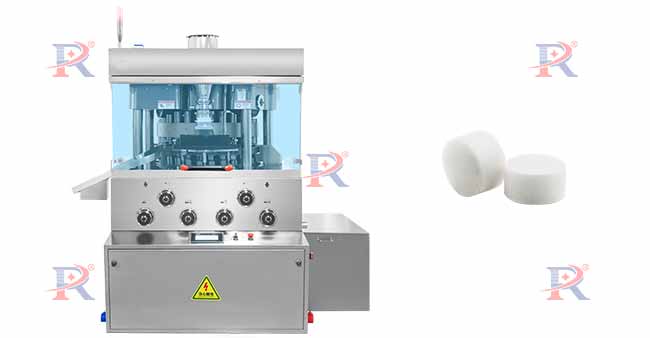As a consumer, you’ve likely encountered various types of pills in your daily life, from over-the-counter pain relievers to prescription medications. Each type of pill is designed with a specific purpose, offering unique benefits based on its composition, release mechanism, and intended use. Understanding the differences can help you make informed decisions about your health. This guide will walk you through the various types of pills, explaining their characteristics, uses, and advantages.

1. Tablets: The Most Common Form of Pills
Comprimés are the most widely used type of pill, offering a cost-effective and versatile way to deliver medication. They are created by compressing powdered ingredients into a solid dose.
Types of Tablets
- Conventional Tablets: These dissolve in the stomach and release medication quickly.
- Chewable Tablets: Designed to be chewed before swallowing, often used for antacids or children’s medications.
- Comprimés effervescents: Dissolve in water to create a fizzy drink, making them easier to ingest.
- Enteric-Coated Tablets: Have a protective coating to prevent dissolution in the stomach, ensuring the medication is released in the intestines.
Taper | Key Feature | Cas d'utilisation |
Conventional Tablets | Quick dissolution | General medication |
Chewable Tablets | Easy to ingest, no water required | Antacids, vitamins |
Comprimés effervescents | Dissolves in water, gentle on the stomach | Pain relief, supplements |
Enteric-Coated Tablets | Prevents stomach irritation | Acid-sensitive medications |
2. Capsules: Versatile and Easy to Swallow
Capsules consist of a gelatin or plant-based shell filled with active ingredients. They are designed for easy swallowing and can hold powders, liquids, or granules.
Types of Capsules
- Capsules de gélatine dure: Contain powdered or granular medication; commonly used for dietary supplements and drugs.
- Soft Gelatin Capsules (Softgels): Designed for liquid or oil-based formulations, offering quick absorption.
- Liquid-Filled Capsules: Encapsulate liquids for precise dosing, often used in the nutraceutical industry.
Benefits of Capsules
- Protect sensitive ingredients from air and moisture.
- Offer a tasteless, odorless form of medication.
- Easily customizable in size and color for branding purposes.
3. Caplets: A Tablet-Capsule Hybrid
Caplets are elongated tablets designed to combine the ease of swallowing found in capsules with the durability of tablets. Their smooth coating makes them less likely to irritate the throat.
Common Uses
Caplets are often used for pain relievers, allergy medications, and supplements, offering the same dosage precision as tablets but with improved ease of ingestion.
4. Lozenges and Troches: For Localized Treatment
Lozenges and troches are designed to dissolve slowly in the mouth, providing localized treatment for conditions like sore throats or oral infections.
Characteristics
- Lozenges: Hard and candy-like, they dissolve over time, releasing medication directly in the mouth and throat.
- Troches: Soft and chewable, used for conditions requiring slow absorption in the oral cavity.
5. Orally Disintegrating Tablets (ODTs): Fast and Convenient
ODTs are designed to dissolve quickly on the tongue without the need for water, making them ideal for people who have difficulty swallowing.
Applications
- Frequently used for anti-nausea medications, allergy relief, and psychiatric treatments.
- Suitable for elderly patients, children, and individuals with swallowing difficulties.
6. Sustained and Controlled-Release Pills
These pills are engineered to release medication gradually over time, maintaining consistent drug levels in the body.
Key Variants
- Sustained-Release (SR): Releases medication steadily over a set period.
- Extended-Release (ER): Similar to SR but often lasts longer, reducing the number of daily doses.
- Controlled-Release (CR): Offers precise control over when and where the medication is released.
Taper | Release Mechanism | Cas d'utilisation |
Sustained-Release | Steady release over hours | Pain management |
Extended-Release | Long-lasting effects | Chronic conditions like hypertension |
Controlled-Release | Targeted delivery | Conditions requiring precise dosing |
7. Specialized Pilules: Tailored for Specific Needs
Some pills are designed for unique medical or consumer needs:
- Buccal and Sublingual Tablets: Dissolve in the mouth, delivering medication directly into the bloodstream through the mucous membranes. Often used for rapid pain relief or cardiac emergencies.
- Effervescent Capsules: Combine the benefits of capsules and effervescence, ideal for patients who dislike swallowing solid pills.
- Compounded Pills: Customized pills made by pharmacists to suit individual patient requirements, often used in hormone replacement therapy or veterinary medicine.
8. Comparing the Different Types of Pills
Pill Type | Avantages | Inconvénients |
Comprimés | Affordable, versatile, stable | May cause stomach irritation |
Capsules | Easy to swallow, versatile fill | More expensive than tablets |
Comprimés | Smooth coating, easy to ingest | Limited customization options |
Lozenges/Troches | Localized treatment | Limited systemic absorption |
ODTs | No water required, fast acting | Fragile, may require special packaging |
Sustained/Controlled-Release | Consistent dosing, fewer doses needed | Complex manufacturing process |
9. Choosing the Droite Pill Type for Your Needs
When selecting the best pill type, consider the following factors:
- Medical Condition: Fast-acting pills like ODTs or sublingual tablets are ideal for emergencies, while extended-release pills work well for chronic conditions.
- Facilité d'utilisation: Capsules or caplets are often easier to swallow, especially for children or elderly patients.
- Ingredient Stability: Sensitive ingredients may require encapsulation to protect them from degradation.
Consult with your healthcare provider or pharmacist to ensure the pill type aligns with your treatment goals.
Conclusion
Understanding the different types of pills helps you make informed choices about your health. From tablets and capsules to specialized forms like sustained-release or sublingual tablets, each type offers unique benefits tailored to specific needs. By knowing how these pills work and their advantages, you can confidently navigate your treatment options and ensure optimal results. Always consult with professionals to select the pill type that best suits your condition and lifestyle.


